Header logo
header top contact widget
gum grafting
A Periodontist Is Your “Go-To” For Healthy, Beautiful Smiles
Posted on Sep 04, 2024 by William J. Claiborne, DDS MS
Children seem to know something adults don’t: Research shows that children smile an average of 400 times per day, compared to the average “happy” adult who smiles 40-50 times per day while the typical adult smiles only 20 times per day.
While a beautiful smile can make us more confident in how we appear to others, it also has health benefits you may not realize. According to Henry Ford Health, smiling can:
• Boost mood by causing the release of cortisol and endorphins
• Reduce blood pressure
• Increase endurance
• Reduces pain
• Reduces stress
• Strengthens immune system
In the article, they also share that studies show people who smile are perceived as more likable, courteous and competent. Smilers are also seen as more productive at work and are higher earners.
https://www.henryford.com/blog/2017/10/health-benefits-smiling
A pleasant smile is considered a symbol of beauty and well being. The appearance of a smile is influenced by a variety of factors including the shape and position of teeth and surrounding gum tissue levels. In cases where the gum tissues can greatly enhance esthetics, people often seek out the advanced skills of a periodontal specialist for periodontal plastic surgery.
Many general dentists and other dental specialists refer their patients to a periodontist for their specific skills. A periodontist is a dental specialist who is the expert in caring for the gum tissues. This includes all levels of periodontal disease as well as in the reshaping of gum tissues.
Crown Lengthening:
When the enhanced appearance of a smile is being sought, a periodontist is the pro in creating a balanced smile line. In the procedure known as “crown lengthening,” the arch of gum tissues over teeth visible in a smile can be repositioned. This is done in a procedure known as a gingivectomy.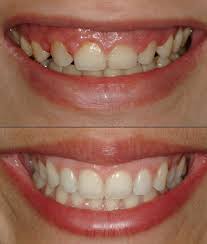
In smiles that have an uneven line of gum tissues, the up-and-down line of tissue creates a jumbled look. Crown lengthening can alter the height of the gum arches over teeth, typically performed prior to placement of crowns (“caps”) to provide a more balanced smile line.
A crown lengthening procedure can sometimes save a tooth from removal, particularly when a tooth breaks near the gum line. By exposing more of the tooth’s structure, it may be possible to place a crown over the remaining tooth. This can help the patient avoid the extensive costs and potential upkeep of replacing it.
“Gummy” Smile:
Esthetically, a balanced smile typically shows the front top 6 or 8 teeth. Arching each tooth, there is generally minimal gum tissues showing, and sometimes none.
A gummy smile, in the periodontal specialty, is known as EGD, an abbreviation for excessive gingival display or a gingival smile (GS). The trait occurs more often in females than in males. (Gingival is of or relating to the gums.)
For individuals who have a “gummy” smile, it can be seen as a personal trait that many feel is a positive part of their individuality. A famous gummy smile is that of Katie Couric, who shares hers openly and beautifully.
However, not everyone with this trait feels comfortable with the look nor the way it makes them feel when smiling. Some people tend to suppress smiling fully. Others conceal their smile with a hand when smiling fully or laughing or “hold back” by smiling with their lips only.
A periodontist can determine the proper amount of gum tissue for your individual smile and provide contours that are natural and flattering to teeth. Because a periodontist is respectful to the care of tender gum tissues, they are the go-to of many general dentists when it comes to ideal and gentle treatment. This also helps in minimizing healing time.
Receded Gums:
Another procedure a periodontist expertly performs is gum grafting. This is often performed to cover exposed roots, reduce further gum recession, protect vulnerable tooth roots from decay, and improve your smile. Recession can occur as a result of periodontal disease, which causes tooth roots to become exposed and makes the teeth look long.
Gum tissues are very tender tissues with many nerves. Procedures that involve the gums must be performed with precision to minimize discomfort and speed healing time. A periodontist excels in the skills to create an optimal outcome with the most conservative treatment needed.
Replacing Teeth:
When tooth loss has occurred (whether from gum disease, an accident, or due to genetics), our Western NC periodontal dental office also works with a number of dentists in the diagnosis and placement of dental implants.
With over 40 different implant systems, the one suited best for you depends on factors that an experienced dental specialist takes into consideration. His or her skills in placement – achieving optimal angles and depths – helps to maximize treatment outcomes while enhancing comfort.
Patient Comfort:
Patient comfort has always been a high priority in our our Asheville periodontal practice. We are widely known for an environment of compassionate and respectful care and understand that over 70% of the adult population have some level of dental fear or anxiety. After all, we would want such an approach to care for ourselves and our loved ones.
For optimal comfort and relaxation, we offer several sedation options, including oral and IV sedation.
• Oral sedation is a pill that helps patients relax. It also has an amnesiac effect, leaving most with little or no memory of treatment afterward.
• I.V. sedation (“twilight sleep”) places the patient in a deeper sleep state and erases memory of the procedure. It is administered by a Medical Doctor (MD) who is a board certified Anesthesiologist.
With both sedatives, patients are closely monitored with advanced safety equipment throughout treatment.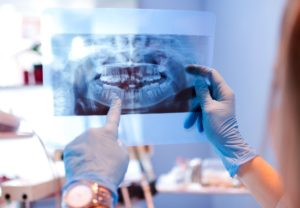
In addition to advanced skills, our Asheville periodontal dental office is known for utilizing some of the industry’s most advanced technology, including LANAP Protocol using PerioLase MVP-7. This laser efficiently and effectively treats periodontitis (advanced gum disease). It causes very little or no discomfort and has a quick recovery time. This laser has also been found to stimulate bone regrowth in damaged areas.
Affordable Treatment:
We believe that every individual can live a happier, longer life with a healthy smile they enjoy sharing. If financial constraints are holding you back, ask about our easy payment plans. Most of these break treatment fees into monthly payments that are manageable to most budgets. They are interest-free and require no down payment.
Get the coming year started with your smile goals achieved! Call 828-274-9440 to schedule a consultation or exam at our Asheville periodontal dental office. Our friendly staff can help you arrange this private time together and will make you feel welcome.
The “Risk vs. Reward” of Oral Health
Posted on Jun 25, 2024 by William J. Claiborne, DDS MS
Risk versus reward.
This is a phrase that’s often associated with decision-making, such as stock market investments. While certain strategies can increase the potential for “reward,” there is still an element of “risk” in losing part or all of the investment.
As a periodontist in Asheville, I see this in how it relates to decisions in dentistry. This is the case in replacing lost teeth. As a periodontal specialist, I place many dental implants in patients who’ve lost teeth that likely could have been kept had the patient made different decisions.
I also see this is in the decision of patients to have a crown (“cap”) placed on teeth. When a dentist recommends a crown, it is typically to keep the existing tooth structure intact and protected. So, when a tooth that’s been filled and needs yet another filling, the dentist may advise crowning the tooth instead. This preserves the remaining structure by avoiding the “risk” of tooth from breaking off.
Or, when a tooth shows signs of fracture(s), crowning may prevent the tooth from the need for removal. This is because a tooth that eventually breaks below the gum line can no longer be saved. Once removed, tooth replacement brings on an entirely new set of decisions, and costs.
Your general dentist’s goal, like yours, is to help you achieve and maintain a healthy smile. He or she wants you to keep your natural teeth or, if tooth loss does occur, replace them in a way that supports your overall oral health. A periodontist can be a strong team player in this goal.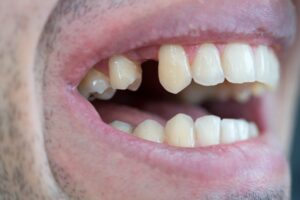
A periodontist is a dentist who specializes in the prevention, diagnosis, and treatment of periodontal disease and in the placement of dental implants. A periodontist is also a specialist in reshaping gum tissues, for reasons that may include esthetics as well as maintaining oral wellness.
I place many dental implants and am a proponent of them as a superior tooth replacement option. However, as ideal as an implant is, there is nothing as good for your oral health as natural teeth. This is why it’s so important to keep them. This may, for certain teeth, require the placement of a crown.
A periodontist may be involved in certain aspects of treatment to optimize a patient’s results and success level while minimizing discomfort. For instance, a periodontist may work with your general dentist to help save a tooth from removal when a tooth has broken close to the gum line. This is accomplished through crown lengthening procedures where gum tissues are removed to expose more of the tooth. This may be able to make sufficient tooth structure available to support a crown.
Crown lengthening is also beneficial in sealing gum tissues surrounding a tooth at its base. By securing the tissue around the tooth or crown, bacterial entry is avoided and the risk for periodontal (gum) disease decreased. This is especially beneficial in cases where gum tissues have receded, exposing sensitive tooth root sections that are easily affected by oral bacteria.
In some cases, gum tissue height can be corrected by careful removal in a procedure known as a gingivectomy. To enhance the appearance of a smile with an esthetically-pleasing smile line, combined with the placement of crowns, the tooth-to-gum ratio is rebalanced.
This is what is often referred to as a “gummy smile.” Crown lengthening is a common method that teams your general dentist with a periodontist to create a smile that looks natural and is beautifully flattering.
Another look at the risk-reward consideration, the “risk” of not caring properly for oral health can easily upend the “reward” of having a healthy smile. Regular dental check-ups and a thorough at-home oral hygiene regimen can prevent the development of cavities and periodontal disease.
When oral bacteria levels in the mouth are not managed, the teeth and gums pay the price, often through the need for costly treatment that may have been prevented. Periodontal disease is the nation’s leading cause of adult tooth loss.
Research has also found that the inflammatory bacteria of gum disease can enter the bloodstream, triggering or worsening a long list of serious health problems. These include heart disease, stroke, high blood pressure, diabetes, arthritis, memory loss, some cancers, impotency and Alzheimer’s disease.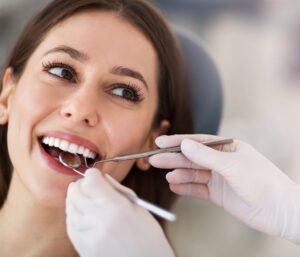
Although gum disease can exist without obvious signs or symptoms, the most commonly noticed are:
• Red, swollen or tender gums
• Seeing blood in the sink when brushing
• Receded gums
• Loose or separating teeth
• Pus pockets on gum tissues
• Sores in the mouth
• Persistent bad breath
As a periodontist in Asheville, we want everyone to know the benefits of a healthy, confident smile. Maintaining healthy gums and keeping your natural teeth is important to every individual.
If your gum health needs improvement or there are signs of gum disease, we can structure a program that restores healthy gums and helps you maintain your oral health between visits.
For those who have already experienced tooth loss, we are happy to discuss the process to replace them with dental implants. These are the closest thing to the natural teeth you had and will restore stability and dependable biting and chewing. Too, dental implants are designed to last a lifetime, making them an excellent investment.
With proper measures, you can enjoy healthy gums and natural teeth throughout your lifetime. Call 828-274-9440 to schedule a periodontal examination or ask for a consultation to get to know us. A referral to our office is not required.
If dental fear or anxiety has kept you from receiving regular dental care, please ask us about oral or I.V. sedation (“twilight sleep”). Both are administered safely with patient comfort always a priority.
What Can A Periodontist Do For You?
Posted on May 13, 2024 by William J. Claiborne, DDS MS
In meeting someone for the first time, a common question is “What do you do?” Telling them that I am a periodontist often gets followed by another question: “What does a periodontist do?” The long version, according to the American Academy of Periodontology, is:
“A periodontist is a dentist who specializes in the prevention, diagnosis, and treatment of periodontal disease, and in the placement of dental implants. Periodontists are also experts in the treatment of oral inflammation. Periodontists receive extensive training in these areas, including three additional years of education beyond dental school. They are familiar with the latest techniques for diagnosing and treating periodontal disease, and are also trained in performing cosmetic periodontal procedures.”
Choosing this dental specialty is achieved by an understanding that it will require many years of education. A periodontist begins by completing 4 years of college (undergraduate training) followed by another 4 years in dental school to earn a doctorate. The periodontal specialty then requires another 3-4 years before completing the stringent requirements for a specialty certification in periodontics.
What can all of this in-depth education and advanced skill level do for you?
Let’s begin with the diagnosis and treatment of all stages of periodontal (gum) disease. According to the Centers of Disease Control & Prevention (CDC), it is estimated that over 47% of Americans have some level of gum disease, which is also the leading cause of tooth loss. That’s nearly half of our population.
In addition to a healthy smile, the health of your gums can impact your overall health. By keeping the bacteria of advanced gum disease, known as periodontitis, you lower your risks of a long list of serious health problems that have been shown connected to gum disease bacteria. These include heart disease, stroke, diabetes, arthritis, Alzheimer’s disease, some cancers, preterm babies, and erectile dysfunction (ED).
A periodontal specialist is also a leading choice in the selection and placement of dental implants. With specialized skills, a periodontist is especially respectful to oral tissues as sensitive layers that have an important role in the appearance of a smile and the health of teeth. Utilizing these skills, a periodontist can help to minimize incisions while effectively treating each area in the mouth.
When it comes to the selection of the implant system best for you, our speciality also understands the complete spectrum of all implant types. Some implant systems offer a non-removable (“fixed”) option with others functioning with removable teeth.
Proper selection of your dental implants can also help to keep treatment fees to a minimum. This is because some implants can support more than one tooth and others are designed to support a full arch of replacement teeth. Because treatment fees are based on the number of implants required, your tooth replacement goals may be within a more manageable budget with fewer implants needed to accomplish your goals.
Reshaping gum tissues is also part of our specialized skills. The gum tissues are designed to provide a tight seal around the base of teeth and block bacterial entry to the sensitive tooth root area. When oral bacteria are able to penetrate beneath the gum line, they can cause inflammation to tender gums and attack the structures that support natural teeth.
In a procedure known as a gingivectomy, we are able to reposition or graft gum tissues over the area of recession to restore a healthy seal and protect the tooth structures below the surface.
In some cases, we are also able to save a natural tooth when the tooth breaks near the gum line. In a procedure known as crown lengthening, a periodontist can sometimes expose enough of the tooth structure for the placement of a crown. By preventing the need for the tooth’s removal, the patient is able to avoid the extensive costs and potential upkeep of replacing it.
When it comes to a smile’s appearance, a periodontist is also the go-to. In smiles that have an uneven line of gum tissues, meaning that some teeth have more gum showing than others. This up-and-down line of gum tissue creates a jumbled look. Crown lengthening can alter the height of these tissues prior to placement of a crown (‘cap’) to provide a more flattering smile line.
Another benefit of the skills of gum recontouring are the correction of a “gummy smile.” In this, the patient has too much gum tissue bordering the tops of teeth, making the smile line unbalanced. Using the gingivectomy procedure, a periodontist can lower the height of gum tissues, which is generally followed by placement of crowns.
Here, our Western North Carolina periodontal dental office features some of the most advanced technology in dentistry. Many of these features are not available in other dental offices elsewhere. Some of these include: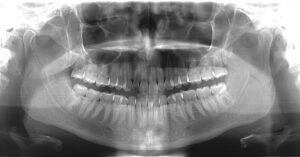
LANAP With PerioLase MVP 7 (Laser-Assisted New Attachment Procedure) – an advanced protocol that efficiently and effectively treats advanced gum disease with the added advantages of a dental laser. This offers a non-surgical alternative for patients with moderate to severe periodontal disease. LANAP treatment has also been found to stimulate bone regrowth in damaged areas.
3-D Cone Beam Imaging – used for diagnoses and treatment planning, giving clear views of the upper and lower jaw, used for intricate review of sagittal, axial, and coronal planes, locating and tracking nerve canals optimizes implant placement.
CareStream Cone Beam Computer Tomography Imaging – provides enhanced tomography that interacts with 3D imaging for exceptional detail and range.
CS 3600 Intraoral Scanner – This scanner quickly and comfortably captures digital impressions without the need for bulky, goopy trays! Through this process, we are able to create precision models or appliances (crowns, inlays, onlays, bridges, orthodontic appliances and aligners, custom abutments). The scanner can also reach difficult–to–access areas in the patient’s mouth for superior results with improved patient comfort.
Computerized Dental Implant Placement – allows for pre-surgical positioning of dental implants using a 3D model of the patient’s jaw. Once the implant type is selected, a template is developed for optimal treatment success, even for complex cases.
Sedation Dentistry – When dental fear or anxiety causes people to delay or avoid having dental treatment, we offer oral or IV sedation. Oral sedation is a pill that helps patients relax. It also has an amnesiac effect, leaving most with little or no memory of treatment afterward. I.V. sedation (also known as “twilight sleep”) places the patient in a deeper sleep state and erases memory of the procedure.
Through our extensive menu of treatments offered, it’s easy to see that our main goal is to provide patients with a comfortable and positive experience within our specialized skills. We believe this helps patients truly appreciate the advantages of a healthy smile and understand how our involvement can create a healthier, more confident individual.
I also feel it’s important that people are aware of the signs and symptoms of periodontal disease, which are:
• Red, swollen or tender gums
• Seeing blood in the sink when brushing
• Receded gums
• Loose or separating teeth
• Pus pockets on gum tissues
• Sores in the mouth
• Persistent bad breath
If any of these are present, please know that the condition will only worsen without treatment. And, early treatment can minimize treatment needs and costs.
Call 828-274-9440 if you have questions or wish to arrange a consultation discuss your individual needs (or those of a smile you love!). Our Asheville periodontal dental office staff will be happy to help you!
Avoid Dental Implant Failure
Posted on Apr 04, 2024 by William J. Claiborne, DDS MS
There are reasons to go to an expert for certain things. For example, I’d never try to do electrical work around my house on my own; I’d call an electrician.
When it comes to dental implants, there are also reasons to seek out an “expert.” In this article, I’ll explain why it’s best to have your dental implants selected and placed by a periodontist.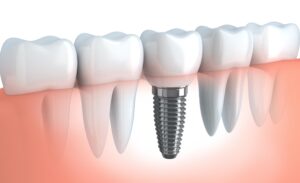
First, let’s look at the structure of an implant. Serving as a replacement for a missing tooth, the implanted portion is a titanium screw that is positioned into the jawbone. Over the course of 3-6 months, the jawbone grows around the implant, securing it in place. It can now support an artificial tooth or crown.
Dental implants have many benefits when it comes to restoring biting/chewing/speaking function and smiling appearance, including:
- enhancing the appearance of a smile
- improving biting and chewing function
- stabilizing surrounding teeth and jaw tissue
- halting the process of bone loss, known as resorption
- an increased quality of life for many people
Dental implants have an excellent success rate – 90-95%. However, there are instances where a dental implant can fail.
Dental implant complications can occur from infections, gum recession, and nerve and tissue damage. There is also a higher risk of implant failure for individuals who smoke or have diabetes, gum disease, have radiation therapy to the jaw area or take certain medications.
A periodontal specialist has advanced training and skills in the diagnosis and placement of all types of dental implants. This means that this dental specialist can determine which implant system will work best for your individual needs. For example, a person who has lost a great deal of bone mass may only be a candidate of certain implant types or may need a sinus lift prior to placement. A periodontist can make these determinations so your potential for implant success is higher.
One of the most common causes for implants failure is due to an infection at the implant site. Because a periodontist specializes in the care of gum tissues in the mouth, he or she can take measures to treat the infection at early stage to resolve the problem. However, in some cases, treating the infection may require implant removal in order to reach the infected bone tissue.
Using advanced skills, a periodontist can also assess your gum health prior to implant placement. He or she can pretreat any periodontal diseases so the implant has a healthy foundation. When the gum tissues around the implant are inflamed or have receded, the implant is at risk for entry of bacteria into the area where it is implanted.
After the implant is placed, it should fuse with the bone. A complication that prevents this may require the dental surgeon may remove it. Fortunately, after the implanted area is restored to a healthy state, the implant procedure can be redone.
Another benefit in using a periodontal specialist for implant placement is in their in-depth understanding of the nerves and tissues surrounding the jaw bones. There is a risk for failure when a dental implant is placed too close to a nerve. For example, there is a nerve that runs horizontally through the lower jaw. If the implant is placed in close proximity, it can cause numbness, tingling, or pain.
Nerve or tissue damages can result in:
-
- numbness on the side of the implant, including the lower lip and chin
- persistent pain or discomfort
- tingling, tickling, or burning sensations in the gums and skin
While precision placement (depth, position and angle) is a bonus of a periodontist’s skills for implant patients, our Asheville periodontal dental patients have the benefits of advanced technology. Our Computerized Dental Implant Placement system is designed for pre-surgical positioning of dental implants that uses a 3D model of the patient’s jaw.
Once the implant type is selected, a template is developed for optimal treatment success, even for complex cases. This minimizes disruption of gum tissues and targets implant placement at ideal depths and angles. Thus, treatment success rates are higher with faster (and more comfortable) healing time.
An example of this precision placement guidance in with upper dental implants. With declined bone mass of the upper jaw (typically from years of missing tooth roots), the sinus cavities can hover too close to the position(s) where implants are to be placed. In these cases, we can perform a sinus lift.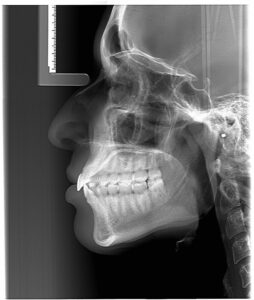
Should the dental implant protrude into the sinus cavity, the sinuses can become inflamed, causing:
- pain, tenderness, or swelling around the cheeks, eyes or forehead
- nasal blockage, often with green or yellow mucus
- a reduced sense of smell
- headaches
- toothache
- persistent bad breath
Of course, like a natural tooth, excessive force or impact can cause a dental implant to crack or become loose. For example, for people who grind or forcefully clench their teeth (“bruxing”) during sleep may need to wear a bite guard to prevent damage to the implant as well as their natural teeth.
In some instances, it can take up to 5 years for implant-related problems or infections to become apparent to the patient. Any issues that arise around the site of the dental implant should be examined and addressed without delay.
We want your dental implant(s) to last your lifetime and bring you as much eating and laughing pleasure as they are known to give. The best way to ensure the success of a dental implant is to follow the aftercare advice your periodontist and dentist provide.
As with a person’s natural teeth, an implant and the tissues surrounding it require regular cleaning. Daily flossing in the area at least once per day is needed after the gums have healed. Some patients prefer interdental brushes to access areas that are more difficult to reach.
 Regular dental check-ups and appointments for cleanings should occur at least twice a year to ensure the longterm success of your implants. Once a quarter may be advised for some individuals who have higher risks for plaque development.
Regular dental check-ups and appointments for cleanings should occur at least twice a year to ensure the longterm success of your implants. Once a quarter may be advised for some individuals who have higher risks for plaque development.
Optimal comfort for our Western Carolina patients has always been a priority. For many, a desired level of comfort and relaxation includes sedation options. Here, we offer several sedation options, including oral and IV sedation (“twilight sleep”). These are administered safely by an anesthesiologist who uses advanced safety equipment throughout your treatment.
If you are considering dental implants, you may wish to begin with a consultation appointment. During this time, we can explain the vast difference in comfort, treatment time, and success available through our specialized skills and extensive technology.
Call 828-274-9440 to schedule. New patients are always welcome.
Recent Posts
Categories
Archives
- September 2024
- August 2024
- July 2024
- June 2024
- May 2024
- April 2024
- March 2024
- February 2024
- January 2024
- December 2023
- November 2023
- October 2023
- September 2023
- August 2023
- July 2023
- June 2023
- May 2023
- April 2023
- March 2023
- February 2023
- January 2023
- December 2022
- November 2022
- October 2022
- September 2022
- August 2022
- July 2022
- June 2022
- May 2022
- April 2022
- March 2022
- February 2022
- January 2022
- December 2021
- November 2021
- October 2021
- September 2021
- August 2021
- July 2021
- June 2021
- May 2021
- April 2021
- March 2021
- February 2021
- January 2021
- December 2020
- November 2020
- October 2020
- September 2020
- August 2020
- July 2020
- June 2020
- May 2020
- April 2020
- March 2020
- February 2020
- January 2020
- December 2019
- November 2019
- October 2019
- September 2019
- August 2019
- July 2019
- June 2019
- May 2019
- April 2019
- March 2019
- February 2019
- January 2019
- December 2018
- November 2018
- October 2018
- September 2018
- August 2018
- July 2018
- June 2018
- May 2018
- April 2018
- March 2018
- February 2018
- January 2018
- December 2017
- November 2017
- October 2017
- September 2017
- August 2017
- July 2017
- June 2017
- May 2017
- April 2017
- March 2017
- February 2017
- January 2017
- December 2016
- November 2016
- October 2016
- September 2016
- August 2016
- July 2016
- June 2016
- May 2016
- April 2016
- March 2016
- February 2016
- January 2016
- December 2015
- November 2015
- October 2015
- September 2015
- August 2015
- July 2015
- June 2015
- May 2015
- April 2015
- March 2015
- February 2015
- January 2015
- December 2014
- November 2014
- October 2014
- September 2014
- August 2014
- July 2014
- June 2014
- May 2014
- April 2014
- March 2014
- February 2014
- January 2014
- December 2013
- November 2013
- October 2013
- September 2013
- August 2013
- July 2013
- June 2013
- May 2013
- April 2013
- March 2013
- February 2013
- January 2013
- December 2012
- November 2012
- October 2012
- September 2012
- August 2012
- July 2012
- June 2012


